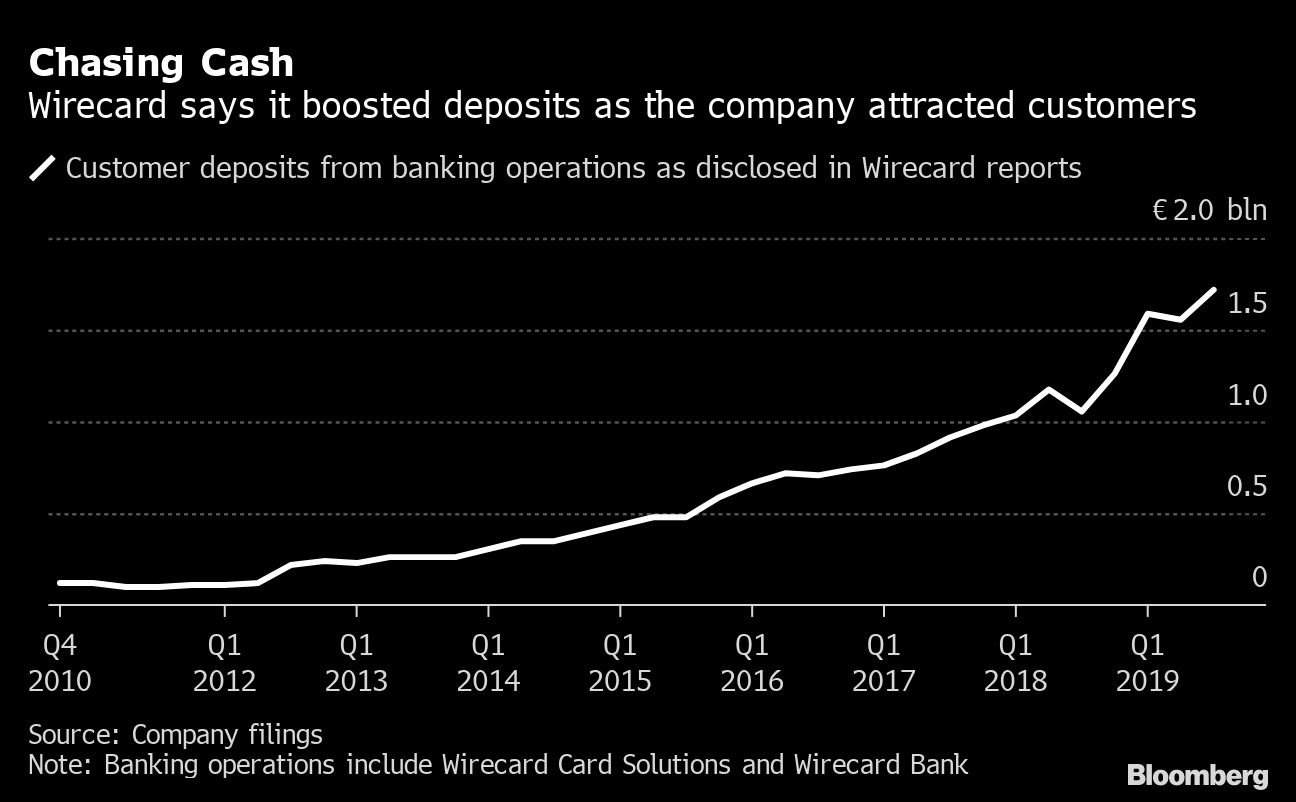Jun 25, 2020
Wirecard raced to win funds in months leading up to insolvency
, Bloomberg News
Wirecard Concentrates on Innovation, Not 'Controversy': CEO Braun
Months before Wirecard AG admitted that it was missing more than US$2 billion in cash, the payments company was racing to load up on funds, adding debt and offering market-beating interest rates to clients who made deposits.
In September, it issued its first investment-grade bond, raising 500 million euros (US$561 million). Shortly after, it sold a 900 million-euro convertible bond with the help of Softbank Group Corp., which had pledged its backing earlier that year in a display of support after allegations of accounting irregularities surfaced.
Some of the money was earmarked to pay down an existing 1.75 billion-euro credit line it had with more than a dozen banks. But by June, when the scope of the accounting scandal became clear, that credit line had been drawn down again, almost in full, according to people familiar with the matter.
The heavy borrowing suggests Wirecard may already have been plugging holes in its finances even as it pushed back aggressively against the allegations of fraud, which were first made public by the Financial Times. On Thursday, three days after the arrest of Wirecard’s former chief executive officer Markus Braun, the company filed for insolvency, the culmination of a stunning scandal that has shaken Germany’s financial circles.

Taking on debt wasn’t the only venue Wirecard used to attract funds. At a time when lenders across Germany are forced to pass on negative interest rates to a growing number of clients, Wirecard in February started offering 0.75 per cent for deposits via its boon app.
Customer deposits from Wirecard’s banking operations had already swelled to 1.72 billion euros (US$1.93 billion) at the end of September, from 1.26 billion euros at the end of 2018. About 550 million of that was invested, leaving roughly 1.2 billion euros in cash.
Across the group, Wirecard claimed to have 3.3 billion euros in cash and equivalents at the time. But after admitting this month that 1.9 billion euros of its cash holdings probably never existed, the real number was likely closer to 1.4 billion euros -- little more than what it had in uninvested client deposits.
Regulators have stepped in to limit any hit for depositors. Germany’s BaFin has moved to shield funds at the division from being used elsewhere in the company, as the parent company goes through the insolvency proceedings. Singapore’s regulator has told Wirecard to keep customer funds from its payments processing business in the city state at local banks.
Wirecard Bank isn’t part of the insolvency proceedings, but the decision about its future now rests with BaFin. The regulator must decide if Wirecard Bank is in financial difficulty. If so, it can freeze deposit withdrawals to win time and assess the bank’s viability. If it has no future, BaFin has to decide whether the bank should be wound down or sent into insolvency proceedings.
The good news for customers of Wirecard Bank is that their money is protected because the unit is part of a group of German lenders who have pledged to insure one another’s depositors should a bank run into trouble. Each Wirecard Bank depositor is eligible for a guarantee of as much as 19.7 million euros.
That’s not the case for the lenders to Wirecard and the investors in its bonds. Its notes due 2024 are indicated at about 17 cents on the euro, down from 82 cents early last week.
Banks are on the hook for about 1.6 billion euros in loans under the existing credit line, people familiar with the matter have said. The lenders -- a group of about 15 led by ABN Amro Bank NV, Commerzbank AG and ING Groep NV -- had been negotiating the next steps with the firm and were surprised by the insolvency filing, Bloomberg has reported.
Wirecard management cited over-indebtedness as reason behind the decision to seek court protection in Munich. It said it was unable to come to an agreement with lenders and was now facing the likely termination of 800 million euros worth of loans on June 30 and that of another 500 million-euros loan on July 1.
--With assistance from Luca Casiraghi.








